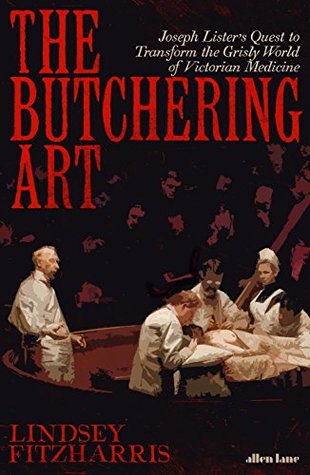More on this book
Community
Kindle Notes & Highlights
Read between
January 26 - January 28, 2022
Crawford Williamson Long
William T. G. Morton
Equally momentous to Liston’s triumph with ether was the presence that day of a young man named Joseph Lister, who had seated himself quietly at the back of the operating theater.
Let us not overlook the further great fact, that not only does science underlie sculpture, painting, music, poetry, but that science is itself poetic …. Those engaged in scientific researches constantly show us that they realize not less vividly, but more vividly, than others, the poetry of their subjects.
The very first time he looked down the barrel of a microscope, Lister marveled at the intricate world that had previously been hidden from his sight. He delighted in the fact that the objects he could observe under the magnifying lens were seemingly infinite. Once, he plucked a shrimp from the sea and watched in awe at “the heart beating very rapidly” and “the aorta pulsating.” He noticed how the blood slowly circulated through the surface of the limbs and over the back of the heart as the creature wriggled under his gaze.
Joseph Jackson Lister was an exception. Between 1824 and 1843, he became a great devotee of the instrument and set out to correct many of its defects. Most lenses caused distortion due to light of different wavelengths being diffracted at various angles through glass. This produced a purple halo around the object in view: an effect that led many to distrust the microscope’s revelations.
achromatic lens,
The surgeon was very much viewed as a manual laborer who used his hands to make his living, much like a key cutter or plumber today.
Lister’s first instrument case had everything a novice surgeon would need at the start of his training: bone saws to hack off limbs; forceps to pick apart tissue; probes to root out bullets and foreign bodies. But there was one tool Lister had carried with him to UCL that very few in his class possessed: his microscope. Under his father’s tutelage, he had grown into a very capable microscopist and learned to trust in the scientific instrument’s powers.
In the early decades of the nineteenth century, French physicians began using the microscope more and more. The physician Pierre Rayer performed microscopic and chemical analyses of urine for the first time in history. The physiologist and pharmacologist François Magendie began using the instrument as a teaching tool in his physiology classes, and the physicians Gabriel Andral and Jules Gavarret started to analyze blood under the lens. By the time Lister was entering medical school, some Parisian physicians were even using microscopes
While many medical practitioners recognized that neither of the two theories provided a comprehensive explanation for how infectious diseases spread, most hospital surgeons sided with the anti-contagionists by pointing to contaminated air in overcrowded wards as
the cause of hospitalism. The French called the phenomenon l’intoxication nosocomiale (hospital poisoning).
Domestic abuse was not a rarity in Victorian England. Wife-beating was a national pastime, and women like Julia were often treated like property by their husbands.
germ theory of putrefaction


